How to Promote your Shopify Store in 2025: 15 Proven Tactics
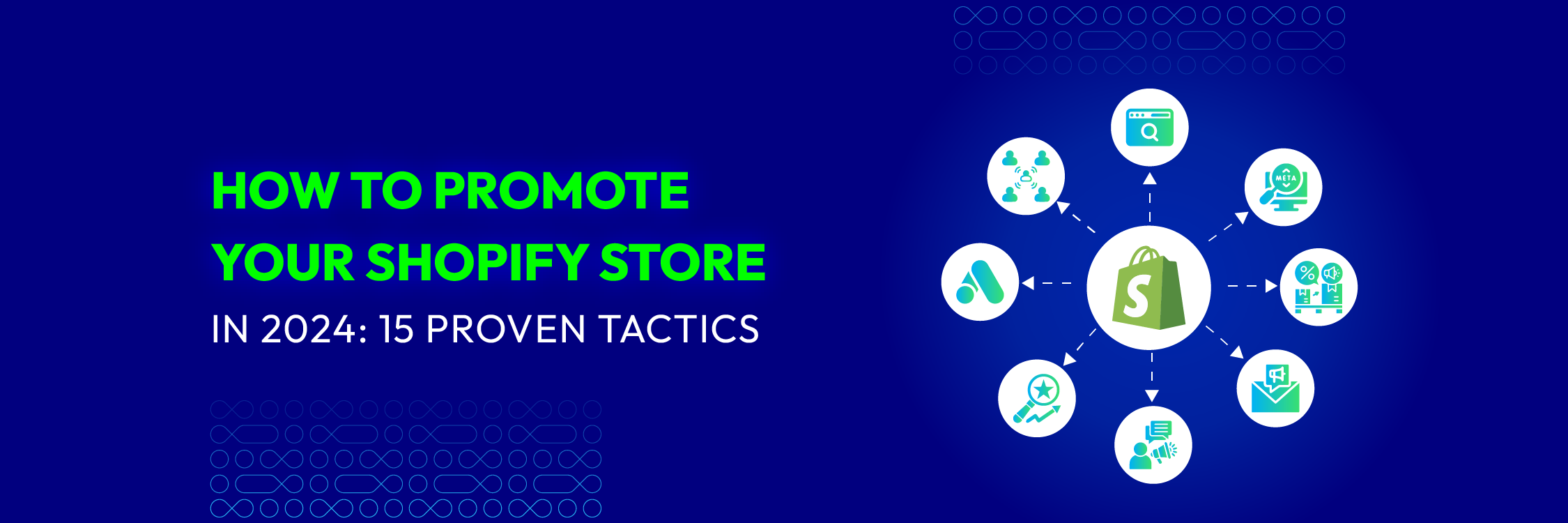
Shopify stands out as one of the largest global ecommerce platforms, currently empowering 2.063 million merchants from 175 countries in the world by the end of 2021. Its achievements can be credited to its interface that is easy for users to navigate, cost-efficient pricing, and strong backing from both the platform and a multitude of application developers.
While Shopify is an excellent choice for establishing a thriving ecommerce venture, it’s not a shortcut that guarantees automatic success. It’s essential to actualize your vision through applying a solid marketing strategy and using the right tools. Without these, you risk joining the ranks of online store owners who struggle to generate revenue, let alone profits.
To assist you in turning your aspirations of a successful ecommerce business into reality, we’ve compiled 15 straightforward marketing strategies on how to promote your Shopify store.
Selecting the Optimal Approach for Boosting Your Shopify Store
The key to enhancing your Shopify store lies in crafting an effective marketing strategy. While the marketing methods discussed in this post are all viable, their effectiveness can vary depending on the circumstances.
Promoting your Shopify store involves a degree of experimentation. Testing various marketing tactics from the list is essential to discern what resonates with your audience and aligns with your product offerings.
When determining your store’s marketing approach, consider the following factors:
-
What products am I selling, and how do people typically discover them?
-
Where does my target audience frequent? (e.g., platforms like Reddit, Instagram, or trade shows)
-
What matters most to my audience? (e.g., pricing, environmental concerns, convenience)
-
What are the most effective communication channels for reaching my audience? (e.g., email, paid advertisements)
-
How are similar brands in the market promoting their stores?
Experimentation remains a crucial aspect of promoting your Shopify store, as it helps you identify the most promising marketing opportunities. Emphasizing the last point, it is recommended to subscribe to your competitors’ emails, click on their ads, and analyze their strategies.
How to Promote your Shopify Store: 15 Proven Strategies
Run a Google Ads Campaign
Continuing with the discussion on paid advertising, let’s explore Google Ads. This platform enables you to feature in search results for specific terms your customers may be searching for.
Google Ads offers various ad types, including search ads, display ads, and shopping ads. While initially seeming daunting, Google has simplified the process for new advertisers.
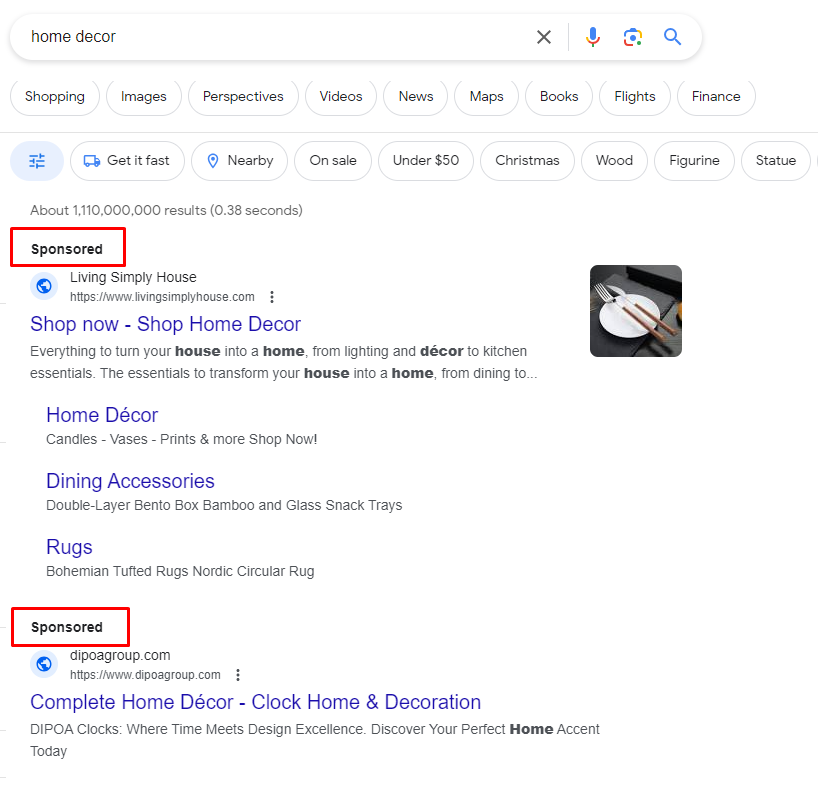
Here are some best practices for promoting your Shopify store with Google Ads:
-
Use Keyword Targeting: Choose appropriate keywords to reach users actively seeking products akin to yours. Opt for precise keywords to minimize clicks from irrelevant searches.
-
Set Up Ad Groups: Group your ads based on product categories or themes. This enhances ad targeting and improves relevance to the searcher’s query.
-
Utilize Ad Extensions: Enhance your ads with additional information, such as your store’s location, phone number, or links to specific product pages. This can boost click-through rates and drive more traffic to your Shopify store.
-
Prioritize High-Quality Landing Pages: Ensure your landing pages are of high quality, relevant, and optimized for conversions. This improves the user experience and raises the possibilities of visitors making a purchase.
-
Test and Optimize Ads: Continuously experiment with and optimize your ads to enhance performance. Try different formats, targeting options, and ad copy to identify what best fits your Shopify store.
Utilize the Power of Meta Ads (Facebook Ads)
One of the quickest methods to promote your Shopify store is through Meta Ads (formerly Facebook ads). Facebook ads offer several advantages:
-
Precise Targeting: Target specific audiences based on demographics, interests, and behaviors, ensuring your ads reach those who are most likely to have an interest in your products.
-
Cost-Effective: Budget-friendliness can be a feature to consider Facebook ads, which allows you to set a specific budget and pay for clicks or impressions, offering cost-effective advertising compared to other channels.
-
Scalability: Once you identify successful strategies, scaling becomes efficient. If your return on investment is positive, increasing your budget allows you to reach more potential customers.
Facebook provides diverse ad formats, including carousel ads, video ads, and collections, enabling visually appealing presentations of your products and brand. For optimal results, consider setting up eCommerce retargeting ads promptly. These ads target visitors who have reached your website but haven’t made a purchase, maximizing the impact of your advertising efforts.
Pay Attention to Email Marketing

Email marketing emerges as a highly efficient strategy for both attracting and retaining customers, especially for small businesses. Encourage potential customers to subscribe to your email list through your social media profiles or ecommerce website. It stands out as one of the most cost-effective ways to market a new business, boasting an average return of up to $36 for every dollar invested.
Once subscribers opt in, you can utilize email campaigns to share promotions, product launches, or engaging content, fostering a relationship and driving sales. Consider implementing automated email marketing campaigns to streamline your marketing efforts, offering a significant advantage for small-business owners with limited time and resources.
Establish a YouTube Channel for Your Store
In 2023, a study revealed that U.S. YouTube adult users spent an average of 47.5 minutes watching videos on the platform daily. Given that YouTube ranks second only to Google in search engine popularity, it presents a prime marketing opportunity for leveraging your brand. A YouTube channel can be instrumental in:
-
Establishing credibility with your audience
-
Fostering engagement and loyalty
-
Amplifying your social media presence
-
Driving traffic to your website

Compelling video content serves as a powerful tool for both attracting new customers and maintaining engagement with existing ones.Executing a fundamental YouTube marketing strategy allows you to display your brand’s identity and engage with your target audience in a novel and captivating way.
Get on TikTok
If you’ve been contemplating how to promote your Shopify store online, TikTok presents a potent audience, particularly for small businesses. Recent TikTok statistics reveal a staggering one billion active monthly users globally, making it an ideal platform to connect with younger demographics like zennials and Gen Z. Notably, small businesses like Zendai have achieved success on TikTok, suggesting that it could be the key tool for expanding your business’s social media footprint and fostering rapid growth.
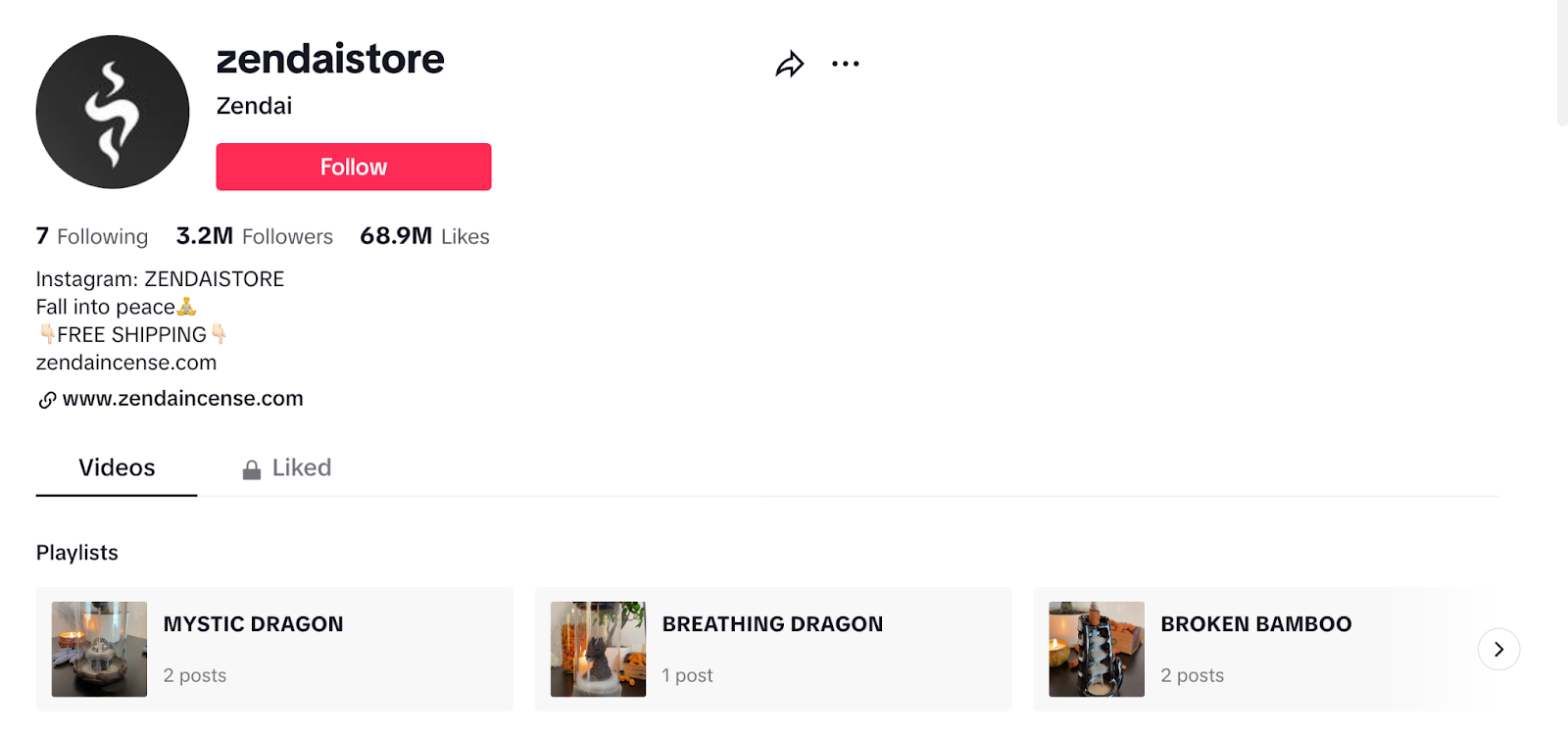
Beyond building brand awareness, TikTok offers a link-in-bio feature that can be utilized to guide viewers to a dedicated landing page, facilitating potential sales.
Be Engaged in Relevant Trending Topics
The hashtag, once a pivotal element in organizing discussions on the social web, has evolved into a supplementary tool. Businesses now have the responsibility of identifying and engaging with trending topics that align with their brand, as the hashtag is no longer a dominant guiding force.
Utilizing social media monitoring tools like Hootsuite can assist in identifying and participating in different trends relevant to your brand. For TikTok users, the Discover page is a valuable resource for observing current trends.
While determining the most effective marketing strategies for your brand, also assess the trending topics that align with your identity, and consider whether to join existing discussions or create new ones.
Request Influencers to Promote Your Store
Sometimes, promoting your product doesn’t require writing guest posts or seeking product reviews. A simple mention on social media can be highly effective. Identify influencers on platforms where your potential customers and target audience are active.
Specifically, consider engaging with nano- or micro-influencers who have smaller audiences, are cost-effective to collaborate with, and have a proven ability to drive engagement.
There are various ways to collaborate with influencers, such as:
-
Sending them a free product for review
-
Paying them for a product shout-out
-
Offering equity or a profit-share in your business
-
Providing them with an affiliate link
Remember, influencer outreach is a numbers game, and you may need to contact multiple accounts to get a positive response. However, once the post goes live, you can anticipate an increase in sales.
Create a Referral Program
After successfully acquiring customers, the next step in how to promote your Shopify store is to turn them into brand advocates, and a referral program is the key to achieving this.
Research indicates that individuals referred by a friend are 400% more likely to make a purchase compared to those who discover your store independently—highlighting the substantial impact of referral programs.
The crucial element for a successful referral program is to provide incentives that motivate customers to share your brand. Take inspiration from Zero Co., which offers a $25 off coupon to both the referrer and the referred friend, creating a win-win situation.
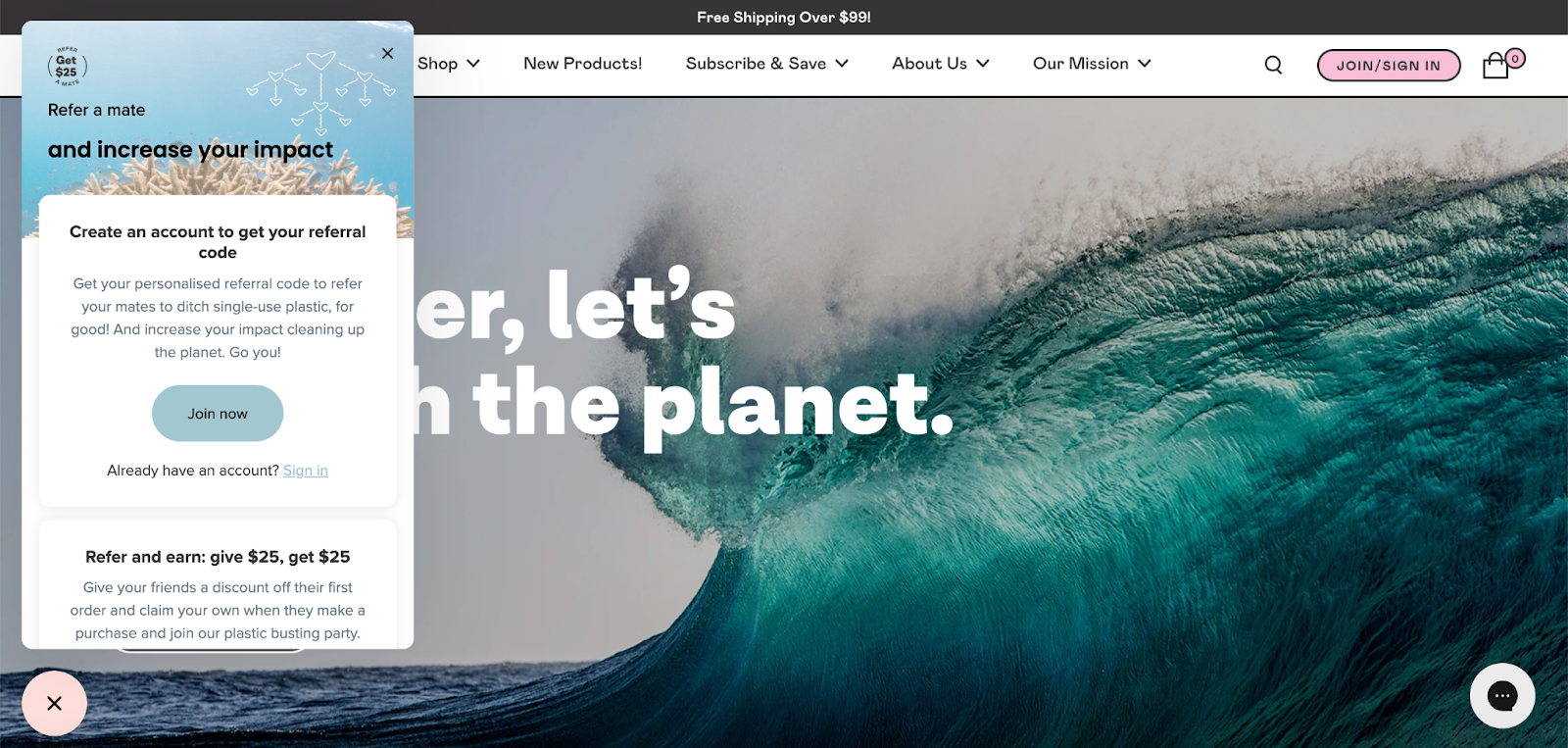
Imagine the scenario where your customer’s friend admires their purchase from your store; they’ll eagerly share details about the enticing referral program, creating a word-of-mouth promotional cycle. Incorporate a similar offer into your store to effortlessly transform customers into advocates who actively promote your brand.
Optimize Search Engines for Better Visibility
53% of shoppers use search engines, such as Google, to find products. Therefore, optimizing your Shopify store for search engines is an effective strategy on how to promote your Shopify store. Similar to driving traffic through organic social media posts, you can attract customers through organic search, appearing in search engine results without paying.

A fundamental strategy is to start with keyword research and optimization. Discover the keywords used by potential customers and strategically integrate them into your Shopify store, encompassing product titles, descriptions, URLs, title tags, and meta descriptions.
The second element involves building quality backlinks, which contribute to establishing trust and authority in the eyes of search engines. Reach out to suppliers, manufacturers, influencers, and thought leaders for backlinks. Content marketing is also effective for driving qualified traffic and generating sales.
It’s important to note that SEO is a long-term strategy requiring time to yield results. Combine these tactics and integrate them into a comprehensive SEO plan. For further guidance, refer to our SEO checklist to ensure all aspects are covered.
Use Micro-content for Social Feeds
Consider the typical context of social media usage—users are often on mobile devices during commutes, taking quick breaks at work, or waiting during commercial breaks. In these scenarios, users are frequently scrolling between tasks. This is why bite-sized content is a compelling strategy to engage your audience, especially on platforms like TikTok designed for quick experiences.
Suppose you run an online bookstore and publish a blog post titled “Top 10 Must-Read Mystery Novels of the Year.” To enhance engagement on social media, adapt this content into bite-sized pieces. Create individual posts for each recommended novel, with concise and captivating descriptions.
This strategy caters to the quick-scrolling behavior of social media users, offering a more effective way to capture their attention compared to presenting the entire list in a fast-paced environment.
Enable Shoppable Feeds on Social Media
Social commerce is on the rise, with projected ecommerce sales from social media reaching $2.905 billion by 2026. If your social media posts lack shoppable features, you’re overlooking a vital component of an omnichannel marketing strategy for your audience.
As an example, the accessories store Cupcakes and Cashmere integrates its inventory into Instagram posts, allowing for convenient and direct purchases.
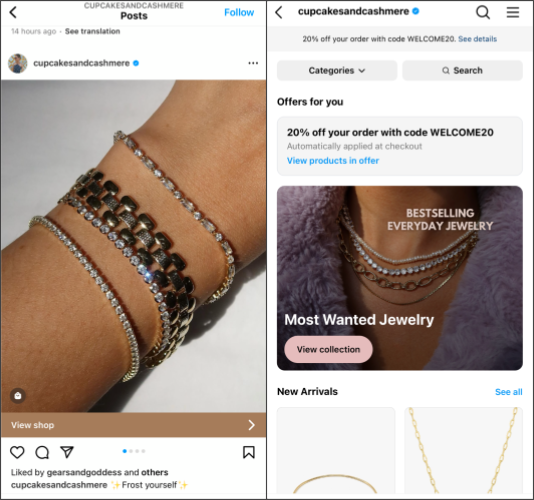
Shoppable posts involve adding virtual “tags” to videos, Stories, and in-feed posts. Viewers can click on these tags to instantly view product prices, learn more, and make a purchase without exiting the app—a highly efficient process for seamless shopping experiences.
Set Up Web Push Notifications
According to Episerver, the first visit to a brand’s website by 92 percent of consumers is driven by purposes other than making a purchase. Web push notifications, employed by many successful ecommerce businesses, offer an effective solution. To start, secure user consent through a prompt or popup on the first site visit. Once granted, these notifications reach users online, appearing on browsers or mobile notification bars.
Web push notifications allow you to connect with potential customers wherever they are online, promoting new products, restocks, and personalized offers. Notably, they bypass ad blockers, ensuring visibility with user consent. As a cost-effective alternative to paid media, web push notifications provide a compelling way to re-engage and promote your Shopify store.
To optimize the use of web push notifications for Shopify store promotion, consider the following tips:
-
Obtain explicit consent.
-
Craft compelling copy for subscription encouragement.
-
Pace notifications to avoid being perceived as spam.
-
Track and adjust campaigns for optimal performance.
Drive Traffic by Blogging
Blogging is a potent tool to drive free traffic to your Shopify store, but it requires a strategic approach. To effectively generate traffic, focus on identifying topics that align with both your brand and what your audience is actively searching for.
Here is an example of a post from the athleisure brand Gymshark that draws in visitors seeking products similar to the ones they offer.

Initiate your blogging strategy with thorough keyword research, aiming to find low-competition keywords with buyer intent. Utilize tools like Ahrefs to identify these topics and create content that directly addresses searchers’ queries.
Once you’ve attracted visitors to your blog, leverage lead magnets or pop-ups to capture their email addresses. This enables you to re-market to them at no cost.
Furthermore, by implementing retargeting ads, you can present tailored advertisements to customers who have demonstrated interest in your products, forming a strategic approach to optimize your online visibility and engagement.
Mutual partnerships with other brands
Establishing partnerships can be a powerful way to broaden your product’s exposure to new audiences. Successful partnerships ensure mutual benefits, avoiding any feeling of one party getting the short end of the stick.
Learn from the approach of the successful Shopify-based store Allbirds, which has forged numerous partnerships over the years.

If you’re wondering how to start, consider beginning with partnerships with other small businesses, especially if you’re just starting out. For instance, if you sell yoga mats or athleisure, collaborate with a local gym to offer their members special discounts, introducing your products to a new customer base.
Alternatively, if your products involve barware, consider hosting an event at a popular cocktail bar in town, promoting it to both your audiences. This creative approach can attract new customers who are likely interested in your products.
The key to successful partnerships lies in creativity and collaboration with brands whose audience aligns with your product. Don’t hesitate to explore and engage in collaborations to expand your reach!
Offer Post-Purchase Upsells
Boosting sales can be effortlessly achieved through post-purchase upsells. Customers who have just made a purchase are highly inclined to make another if given the option.
According to aggregated research from Sumo, upselling typically results in an average revenue increase of 10-30%. Despite this potential, it’s surprising how many retailers fail to capitalize on this opportunity. If major players like Amazon and eBay are leveraging it, it prompts the question of why others aren’t.
Creating offers triggered by items in a customer’s cart or shopping history generates additional sales seamlessly. The beauty of post-purchase upsells is their scalability – as you promote your Shopify store and garner more sales, these offers automatically grow with your business. Set them up, and they work effortlessly in the background.
Wrapping Up
When wondering how to promote your Shopify store, adopt a strategic mindset and experiment with methods tailored to your brand. Whether utilizing micro-influencers, investing in ads, or refining SEO and email strategies, diverse approaches can drive traffic and sales.
Recognize the absence of a one-size-fits-all solution. Identify tactics aligning with your brand, audience, and budget, then continually test and refine.
Brand promotion is an ongoing, adaptive process requiring dedication. Stay current with trends and engage with your audience to establish a thriving online business that stands out.






![Top 20+ Must-have Shopify Apps for 2025 [Free & Paid] - Mageplaza](https://cdn2.mageplaza.com/media/blog/must-have-shopify-apps/top-must-have-shopify-apps.png)
![[2025 Updates] Top 10+ Upsell Apps for Shopify - Mageplaza](https://cdn2.mageplaza.com/media/blog/best-upsell-shopify-app/cover.png)